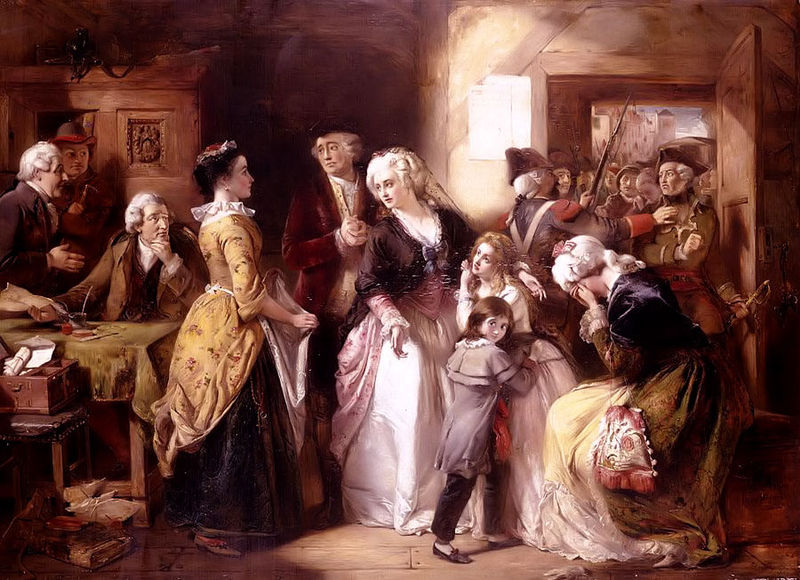|
|||
|
Philatelia.Net / French revolution / Plots / The directory «Plots»The Flight to VarennesThe Flight to Varennes (June 21, 1791) was a significant episode in the French Revolution during which King Louis XVI of France, his wife Marie Antoinette, and their immediate family attempted unsuccessfully to escape from Paris in order to initiate a counter-revolution. Their destination was the fortress at Montmédy in northeastern France, a Royalist stronghold from which the king hoped to start a military campaign which would restore his rule. They were only able to make it as far as the small town of Varennes. The incident was a turning point after which popular hostility towards the French monarchy as an institution, as well as towards the king and queen as individuals, became much more pronounced. The king's attempted flight provoked the charges of treason which ultimately led to his execution in 1793. Louis XVI's indecision on how to deal with revolutionary demands was one of the causes of the forcible transfer of the royal family from the Palace of Versailles to the Tuileries in Paris on October 6, 1789 after Versailles had been attacked by an angry mob. Thenceforward the king seems to have become emotionally paralyzed, leaving most important decisions to the politically untrained queen. Prodded by the queen, Louis committed himself and his family to a disastrous attempt to escape from the capital to the eastern frontier on June 21, 1791. With the dauphin's governess, the Marquise de Tourzel taking on the role of a Russian baroness, the queen and the king's sister Madame Élisabeth playing her maids, the king her butler, and the royal children her daughters, the royal family made their escape. The escape was largely planned by Count Axel von Fersen and the Baron de Breteuil. Due to the cumulative effect of a host of errors which in and of themselves would not have condemned the mission to failure, the royal family was thwarted in its escape when the king was recognized in the town of Sainte-Menehould, by a postmaster named Jean-Baptiste Drouet. The king and his family were eventually arrested in the revolutionary town of Varennes, 30 miles (50 km) from their ultimate destination, the heavily fortified royalist citadel of Montmédy. One rumor suggests that the king was recognized because his face appeared on French assignats, though this story's validity is contested. When the royal family finally returned under guard to Paris, the revolutionary crowd met the royal carriage with uncharacteristic silence. The royal family was confined to the Tuileries Palace. From this point forward, the abolition of the monarchy and the establishment of a republic became an ever increasing possibility. The credibility of the king as a constitutional monarch had been seriously undermined by the escape attempt. France, 1989, Jean Baptiste Drouet Guinea, 1989, Jérôme Petion de Villeneuve, king's arrest Lesotho, 1989, The Royal Family Madagaskar, 1989, Trial of King Louis XVI San-Marino, 1989, King's arrest Vietnam, 1989, King's arrest Advertising: |
|||
© 2003-2025 Dmitry Karasyuk. Idea, preparation, drawing up
|

